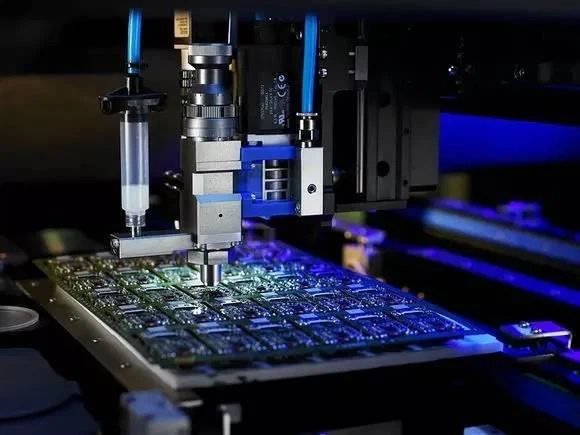* On your first PCB Assembly order!
* Up to $300 discount
 C - A L L E Y
C - A L L E Y 
Home | Events | PCB | About Us | News | Contact Us
Electronic manufacturing using surface mount technology (SMT) involves the assembly of electronic components with automatic machines that place the components on the surface of the printed circuit board (PCB). Compared with traditional through-hole technology (THT), SMT components are placed directly on the PCB surface instead of soldering to the leads. SMT is the most commonly used process in the industry for electronic assembly.
Electronic assembly includes not only placing and soldering parts on the PCB but also the following production steps:
- Applying solder paste made of tin particles and flux to the PCB.
- The solder paste is used in a reflow process to solder the circuit board.

SMT Chip Processing Process Introduction
Applying solder paste is the first step in the SMT assembly process. The solder paste is "printed" on the board using screen printing. Different stainless steel templates are used to "print" the paste on the circuit board based on the design, and various product-specific pastes are used. Using a laser-cut stainless steel template customized for this project, the solder paste is only applied to the area where the components will be soldered. After the solder paste is applied to the board, a 2D solder paste inspection is performed to ensure that the solder paste is applied correctly. Once the accuracy of the solder paste application is confirmed, the circuit board is transferred to the SMT assembly line, where the components are assembled.
Component placement and assembly:
- The electronic components to be assembled are put into the tray or reel and then loaded into the SMT machine.
- The SMT assembly machine uses a vacuum pipette to automatically remove each component from its tray or reel and uses precise pre-programmed XY coordinates to place it in the correct position on the board. The machine can assemble up to 25,000 parts per hour.
- After the SMT assembly, the board is moved to the reflow oven for soldering to fix the components on the board.
Component soldering:
- For mass production orders, the reflow soldering process is used, where the board is placed in a nitrogen atmosphere and gradually heated with heated air until the solder paste is melted and the flux evaporates, fusing the component to the PCB.
- There is a vapor phase welding process for prototypes or highly sensitive components, where the board is heated to a specific melting point of the solder paste.
AOI and visual inspection:
- To ensure the quality of the assembled boards or to find and correct errors, visual inspections are carried out. The AOI system uses multiple cameras to automatically inspect each board and compare the appearance of each board with the correct reference image. If there is any deviation, the machine operator is notified of the possible problem, and a correction is made.
- AOI visual inspection ensures consistency and accuracy in the production process of SMT components.
Why Choose China PCBA Supplier KSPCBA as Your SMT Chip Processing Process Manufacturer?
– Experienced and skilled team
– State-of-the-art equipment
– Strict quality control
– Excellent customer service
– Competitive price

Please send Email to kspcba@c-alley.com or call us through +86 13828766801 Or submit your inquiry by online form. Please fill out below form and attach your manufacturing files( PCB Gerber files and BOM List) if need quotation. We will contact you shortly.
 +86 13828766801
+86 13828766801 kspcba@c-alley.com
kspcba@c-alley.com https://www.kingshengpcba.com/
https://www.kingshengpcba.com/ 2/F, Building 6, Tangtou 3rd Industrial Zone, Tangtou Community, Shiyan Town, Baoan District, Shenzhen, China, 518108
2/F, Building 6, Tangtou 3rd Industrial Zone, Tangtou Community, Shiyan Town, Baoan District, Shenzhen, China, 518108Online Service